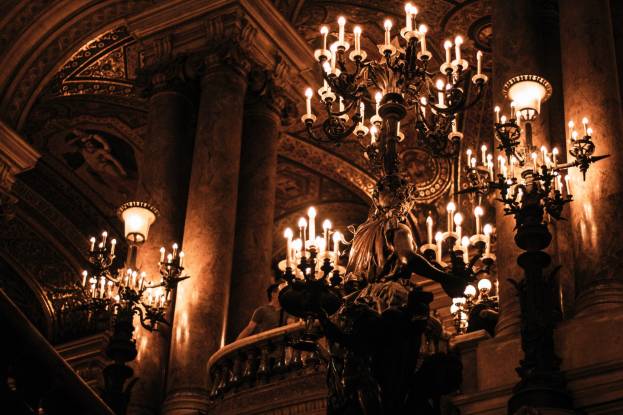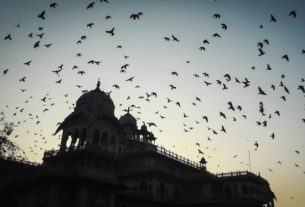“And, despite the care which she took to look behind her at every moment, she failed to see a shadow which followed her like her own shadow, which stopped when she stopped, which started again when she did and which made no more noise than a well-conducted shadow should.”
Gaston Leroux – who popularized the ‘locked room mystery’ sub-genre of detective fiction through his works like ‘The Mystery of the Yellow Room‘ and his fictional amateur sleuth, Joseph Rouletabille – is most renowned for his suspense/ romance/ drama novel ‘The Phantom of the Opera‘; easily one among the most adapted novels in literary history. Originally published as a series in French daily newspaper ‘Le Gaulois’ between 1909 and 1910, this terrific tale of suspense and maniacal passion was published as a novel in 1910.
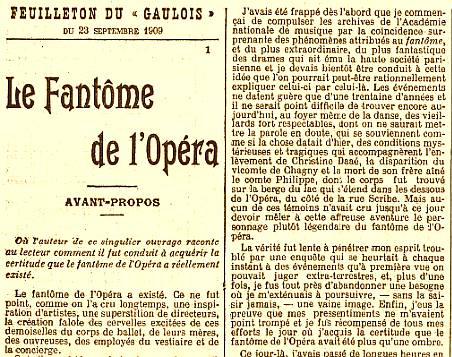
This romantic drama, with a dark angle, narrates the love triangle between the key characters of Christine, an opera singer; Erik, a man with a horrible facial deformity, who is living unknown to others in the Opera house, who introduces himself just as a ‘voice’ to her initially and trains her in fine tuning her singing; and Raoul, her childhood friend who is in love with her. The passion and possessiveness arising from the love and a string of violent and terrifying events that happen in an Opera house in which the legend of an ‘Opera Ghost’ is thriving drives this story forward.
Erik, who had been never loved – even by his mother due to his physical deformities – finds love in Christine, and this lonely man becomes so mad and jealous with his obsessive love for Christine that through his character Leroux portrays the infinite capacity of human mind in generating evil and his tale is an inspection at the depths of darkness that a soul can possess. This is the seed from which, this Gothic tale of mad passions is made, and the setting of the underground rooms of the Opera house matches the chilling atmosphere that the tale exudes.
The anti-hero characterization of Erik is one of among the best; the terror, the evil, the fear and the malice that he generates all is brilliantly balanced with the pity and sadness that the reader feel towards him further into the book.
The Illustrator
When this novel was originally published in 1910 titled Le Fantôme de l’Opéra in French, it was accompanied by five oil paintings by French illustrator and artist André Castaigne. Some of these oil paintings were then reproduced in subsequent editions of the novel and these paintings capture the eerie atmosphere of this story brilliantly.
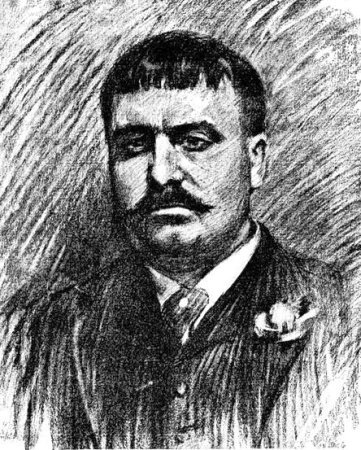
André Castaigne was a master illustrator and painter who drew humans, animals, architecture and landscapes with equal flair and illustrated extensively for both French and American publications.
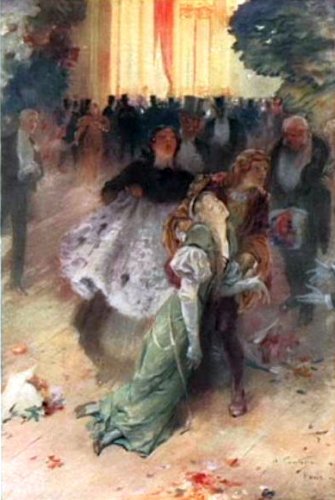
“He said to you, ‘Christine, you must love me!'”
At these words, a deathly pallor spread over Christine’s face, dark rings formed round her eyes, she staggered and seemed on the point of swooning.
Raoul darted forward, with arms outstretched, but Christine had overcome her passing faintness and said, in a low voice: “Go on! Go on! Tell me all you heard! “At an utter loss to understand, Raoul answered: “I heard him reply, when you said you had given him your soul, ‘Your soul is a beautiful thing, child, and I thank you. No emperor ever received so fair a gift. The angels wept tonight.'”
The Phantom of Opera – A clever blend of fact and fiction
Gaston Leroux, in a clever manner, infused real locations and actual events from history to make his novel more credible and more mysterious, and fact and fiction overlaps in this novel to form an atmosphere of misty unknown. Let’s inspect a few such elements that Leroux took from actuality to fuel his imagination.
Gaston Leroux used the ‘Palais Garnier’ opera house as the setting for his novel and some of the rumors and architectural elements associated with this real life monument allowed Leroux to infuse a sense of authority or reality to his fictional work.
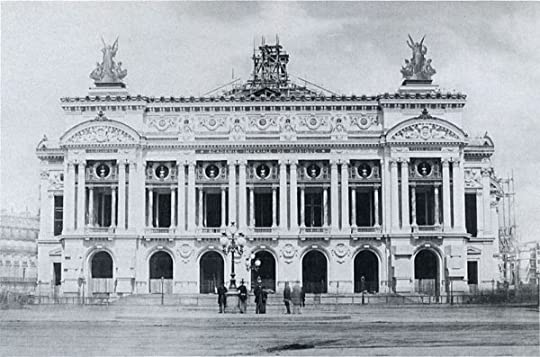
“The house broke into a wild tumult. The two managers collapsed in their chairs and dared not even turn round; they had not the strength; the ghost was chuckling behind their backs! And, at last, they distinctly heard his voice in their right ears, the impossible voice, the mouthless voice, saying:
‘SHE IS SINGING TO-NIGHT TO BRING THE CHANDELIER DOWN! ‘
With one accord, they raised their eyes to the ceiling and uttered a terrible cry. The chandelier, the immense mass of the chandelier was slipping down, coming toward them, at the call of that fiendish voice. Released from its hook, it plunged from the ceiling and came smashing into the middle of the stalls, amid a thousand shouts of terror. A wild rush for the doors followed.
The papers of the day state that there were numbers wounded and one killed. “
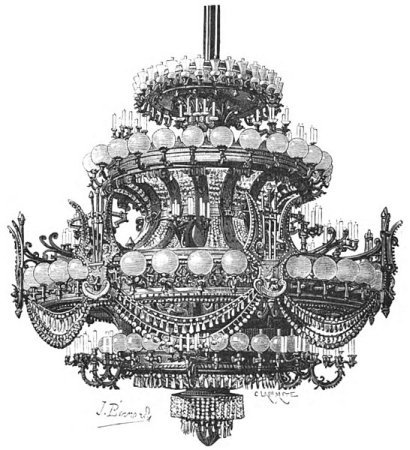
On 20 May 1896, one of the counterweights that keep this 7-ton bronze and crystal chandelier stable broke free and burst through the ceiling into the auditorium, killing a member of the audience. Gaston Leroux was inspired by this tragic accident to create one of the most famous scenes in the novel.
The concept of the subterranean lake under the Opera House is also based on some truth as when the site was excavated in 1862, the groundwater level was found unexpectedly high and despite some heavy duty attempts in draining this water from the swampy work site, the site was not dried up completely and a special double foundation had to be designed to take care of this groundwater seepage.
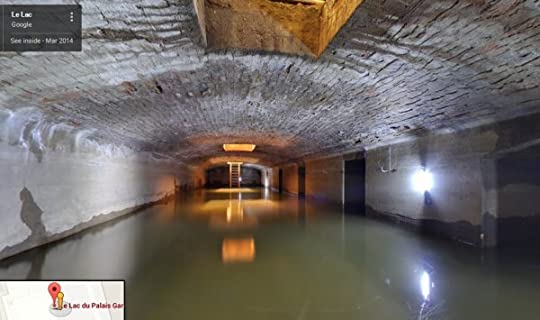
An enormous concrete cistern, which was built to take control of this situation, formed a reservoir of water and Gaston Leroux was inspired by the rumor, which soon spread around Paris stating that there is an enormous underground lake beneath the Palais Garnier. And the large cellars that act as the technical rooms of the building along with its alcoves and arches could have inspired him into creating the plot element that the phantom lived underneath the Opera house.
The Numerous Adaptations
Christine: “You. You are the Phantom!“
The Phantom: “If I am the Phantom, it is because man’s hatred has made me so. If I shall be saved, it will be because your love redeems me.”
There have been a multitude of adaptations for ‘The Phantom of the Opera’ – into various forms like adult and children’s literature, dramas, musicals, movies, television shows and comic books– and I would wish to inspect two specific adaptations here; the 1925 movie adaptation and the famous Andrew Lloyd Webber musical based on the novel.
In 1925, Rupert Julian, the New Zealand cinema actor, director, writer and producer directed a movie adaptation starring Lon Chaney, Sr as Phantom and Mary Philbin as Christine.
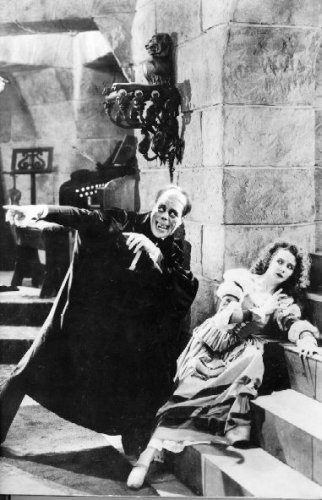
This was a faithful adaptation of the book, with minor plot differences, and it was a box office success. I chose this adaptation for mention because of the famous ‘unmasking’ scene – the scene in which while Erik is playing the organ, Christine creeps up behind him to snatch his mask off – a movie scene, which can be easily stated as one of the most memorable moments in the history of films.
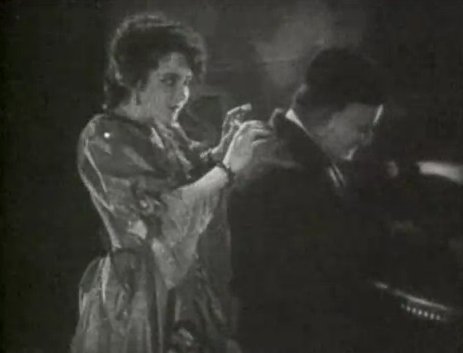
Since the movie is on the public domain reader’s can watch this scene from YouTube. https://www.youtube.com/watch?v=sa3bH….
When it came out in 1925, this scene was the apex of horror, and the makeup that was used on Lon Chaney was much acclaimed and frightening. It is also one of the closest characterizations of Phantom, based on the book. From today’s standard this scene may not have even the slightest iota of horror in it as we have outgrown fear for such visuals with over exposure, but at that time, this scene when watched in a dark movie house could have been quiet startling and one of the promotional tricks that the movie used was that the theaters were asked to keep smelling salts ready in case someone from the audience watching the scene actually fainted.
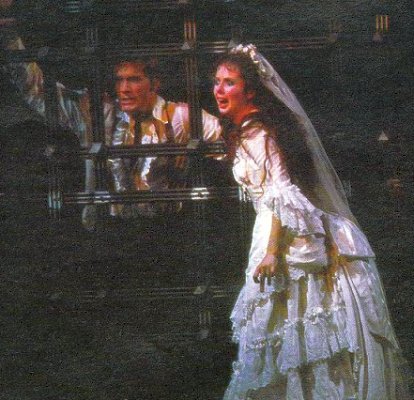
Andrew Lloyd Webber’s musical adaptation opened in London’s West End in 1986, and on Broadway in 1988 and is the longest running show in Broadway history with over 10,000 Broadway performances and a worldwide total gross collection of over $5.6 billion.
‘The Phantom of the Opera’ may feel overemotional from a modern perspective, but this is a classic mystery and suspense story from a whole different time period; and if as a reader you can have a bit of patience and can take account of this difference in the time-frames, then this work from Leroux can definitely be a highly satisfying experience.
Cover Photo: Palais Garnier, Photo by Alessia Cocconi on Unsplash.



